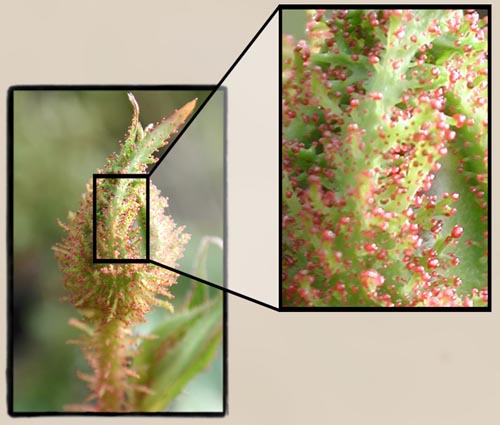 |
|
Albas |
Moss Roses
The Moss Roses are particularly intriguing to me. As a child, I recall having seen Moss Roses growing both in my Grandmother's garden, and in other locations near my home. The balsam-scented sticky moss on the buds was fascinating! The fragrance burned its nature into my memory for all time as I rubbed the buds between my fingers. It wasn't until recently that I began searching for the Mosses to grow in my own garden, and to breed new ones for myself. The bloom you see here is one of my own roses grown from seed, named "Nightmoss ". The Moss roses are of mixed breeding, some of them, and thus, of mixed habits also. The true Centifolia types, which bloom but once are tallish shrubs of arching, sometimes floppy growth, as in 'William Lobb'. The tallest of these are often trained as climbers. Others, such as 'Alfred de Dalmas', which offer some repeat bloom, are likely bred from Portland Damasks, and as such, are of shorter, tidier growth. There are some Miniature Moss Roses listed here as well, all but 'Heidi' from Ralph Moore's breeding program. These tiny Mosses are exquisite replicas of the larger Old Garden Rose mosses, with all the benefits of modern repeat blooming shrubs....just smaller!
It
is not certain what function, if any, these glands have. Since this
is a spontaneous mutation from the norm, the excessive glands do not
likely serve a purpose, aside from entertaining obsessive Rosarians!
*wink* Original photographs and site content © 2006 Paul Barden, All Rights Reserved. |
|


 Here
is a photograph showing the detail of the glandular growth that makes
up the mossing on the buds. As you can see from the exploded view, there
are indeed resin glands on the tips of the extrusions which secrete
the sticky resin.
Here
is a photograph showing the detail of the glandular growth that makes
up the mossing on the buds. As you can see from the exploded view, there
are indeed resin glands on the tips of the extrusions which secrete
the sticky resin.